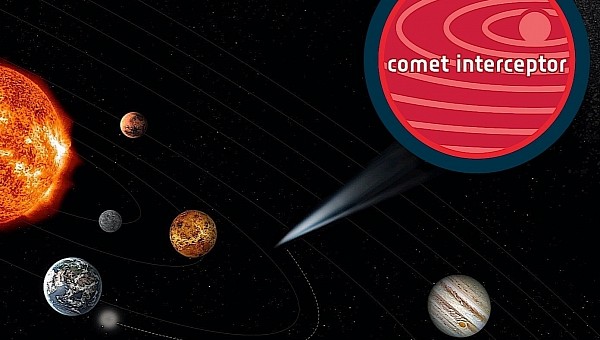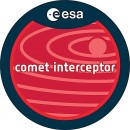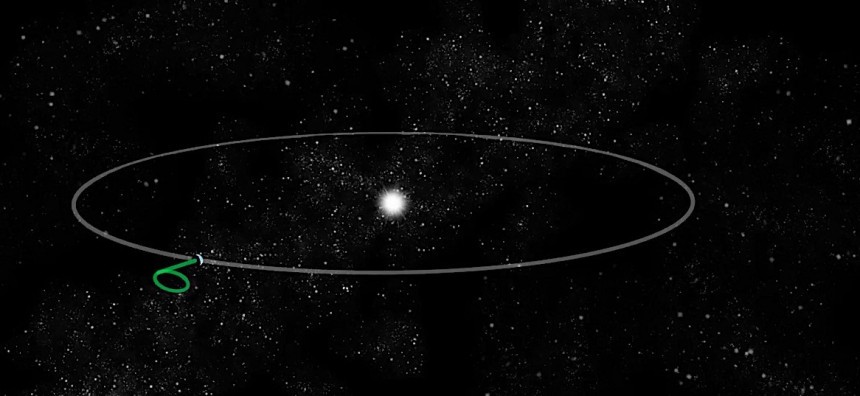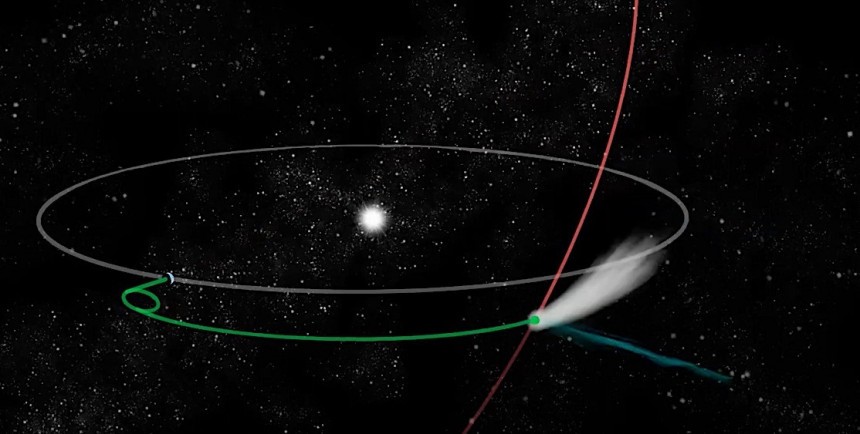Our species’ space exploration efforts come in many shapes and sizes, and spread out in several research directions. The most high-profile areas we focus our attention on are the study of the Universe’s past with the help of telescopes, and the study of planets and satellites using orbiters, landers, and rovers. But there’s a lot we can learn from comets and asteroids too, and several missions are being planned with such targets in mind in the near future.
Although at first glance they may not seem of immediate consequence for our goals of colonizing the solar system, comets and asteroids could hold enough important clues to the past of our neighborhood as to forever alter the way we understand, perceive, and plan its future.
Scientists have always known this, and that’s why we now have a much longer list of small cosmic rocks visited by spacecraft than we do of actual planets and satellites. Missions going back decades (including Galileo, Hayabusa, Rosetta, or New Horizons), have visited a total of 17 asteroids so far, and the list will grow by at least half that once Lucy reaches its destination.
Most of these missions have been designed by Americans, and almost all of them looked at asteroids. Rosetta and a European spacecraft called Giotto looked at comets too, but their targets have always been short-period comets. That means pieces of rock that have already approached our Sun several times, being affected by it and suffering changes as a result.
This means that, although spectacular to study, these comets could do little in the way of shedding more light on what went on in our solar system during its early days. To learn more about that, we’d need pristine comets, coming into our inner solar system for the first time.
With that in mind, the European Space Agency (ESA) kickstarted back in 2019 a mission called Comet Interceptor. Its main purpose is to wait for such a comet to enter the inner solar system, give chase, and study it in detail. In doing so, it should become the first human spacecraft to visit “an interstellar object that is only just starting its journey” in our immediate vicinity.
Comet Interceptor is, in fact, a piece of machinery comprising three pieces of hardware, a main spacecraft and two probes. They’ll launch in a single package from here on Earth and head out to the Lagrange point 2 (L2), located 1.5 million km (932,000 miles) behind our planet as seen from the Sun.
There the spacecraft will begin a potentially lengthy waiting game. The comet that will eventually become the focus of the Interceptor’s study hasn’t even been discovered yet, and because it’s quite difficult to spot such things coming in from the far reaches of space, it could be a while until something suitable comes along (at least two years, as per current estimates).
The Interceptor will wait though quietly in its place, hoping for an unsuspecting piece of coalesced dust, rock and ice to pass by. When it does, the spacecraft will break cover from its ambush place and the actual mission will have begun.
Interceptor will be chasing after the comet until it comes within several weeks' distance of it. Then, the three elements of the spacecraft will separate and take their own trajectories to the target. This is done because the human-made pieces of hardware will have to surround the comet before getting to work.
To our knowledge, all other missions performed until now to asteroids and comets gave people here on Earth a view of the target from only one position at a time. Interceptor will change all that, as each of the three spacecraft and probes will be looking at the comet at the same time, but from different vantage points.
This approach will allow for the creation of a 3D profile of the target, and that’s supposed to help scientists get a better understanding of what they’re looking at, and unlock secrets of our solar system that may be as old as 4.6 billion years. That is provided the comet the Interceptor goes after dates back to the early days of Sol’s formation…
Aside from the observation equipment (cameras, magnetometers and spectrometers, mostly), each of the Interceptor’s spacecraft will carry with it additional science payloads, which will allow for the detection and analysis of things like gas, dust, and plasma.
The Comet Interceptor is still a long way from becoming a reality, as it’s not scheduled to launch until 2029. It will be crammed inside an Arianespace Ariane 6 rocket together with another high-profile ESA project, the ARIEL (Atmospheric Remote-sensing Infrared Exoplanet Large-survey).
Last we heard of the Interceptor was in December 2022, when ESA and German tech and space group OHB announced they’re moving forward with the design and actual build of the three spacecraft. Separately, the mission’s instruments passed the preliminary design review a little earlier, in June 2022.
Scientists have always known this, and that’s why we now have a much longer list of small cosmic rocks visited by spacecraft than we do of actual planets and satellites. Missions going back decades (including Galileo, Hayabusa, Rosetta, or New Horizons), have visited a total of 17 asteroids so far, and the list will grow by at least half that once Lucy reaches its destination.
Most of these missions have been designed by Americans, and almost all of them looked at asteroids. Rosetta and a European spacecraft called Giotto looked at comets too, but their targets have always been short-period comets. That means pieces of rock that have already approached our Sun several times, being affected by it and suffering changes as a result.
This means that, although spectacular to study, these comets could do little in the way of shedding more light on what went on in our solar system during its early days. To learn more about that, we’d need pristine comets, coming into our inner solar system for the first time.
Comet Interceptor is, in fact, a piece of machinery comprising three pieces of hardware, a main spacecraft and two probes. They’ll launch in a single package from here on Earth and head out to the Lagrange point 2 (L2), located 1.5 million km (932,000 miles) behind our planet as seen from the Sun.
There the spacecraft will begin a potentially lengthy waiting game. The comet that will eventually become the focus of the Interceptor’s study hasn’t even been discovered yet, and because it’s quite difficult to spot such things coming in from the far reaches of space, it could be a while until something suitable comes along (at least two years, as per current estimates).
The Interceptor will wait though quietly in its place, hoping for an unsuspecting piece of coalesced dust, rock and ice to pass by. When it does, the spacecraft will break cover from its ambush place and the actual mission will have begun.
To our knowledge, all other missions performed until now to asteroids and comets gave people here on Earth a view of the target from only one position at a time. Interceptor will change all that, as each of the three spacecraft and probes will be looking at the comet at the same time, but from different vantage points.
This approach will allow for the creation of a 3D profile of the target, and that’s supposed to help scientists get a better understanding of what they’re looking at, and unlock secrets of our solar system that may be as old as 4.6 billion years. That is provided the comet the Interceptor goes after dates back to the early days of Sol’s formation…
Aside from the observation equipment (cameras, magnetometers and spectrometers, mostly), each of the Interceptor’s spacecraft will carry with it additional science payloads, which will allow for the detection and analysis of things like gas, dust, and plasma.
The Comet Interceptor is still a long way from becoming a reality, as it’s not scheduled to launch until 2029. It will be crammed inside an Arianespace Ariane 6 rocket together with another high-profile ESA project, the ARIEL (Atmospheric Remote-sensing Infrared Exoplanet Large-survey).
Last we heard of the Interceptor was in December 2022, when ESA and German tech and space group OHB announced they’re moving forward with the design and actual build of the three spacecraft. Separately, the mission’s instruments passed the preliminary design review a little earlier, in June 2022.











